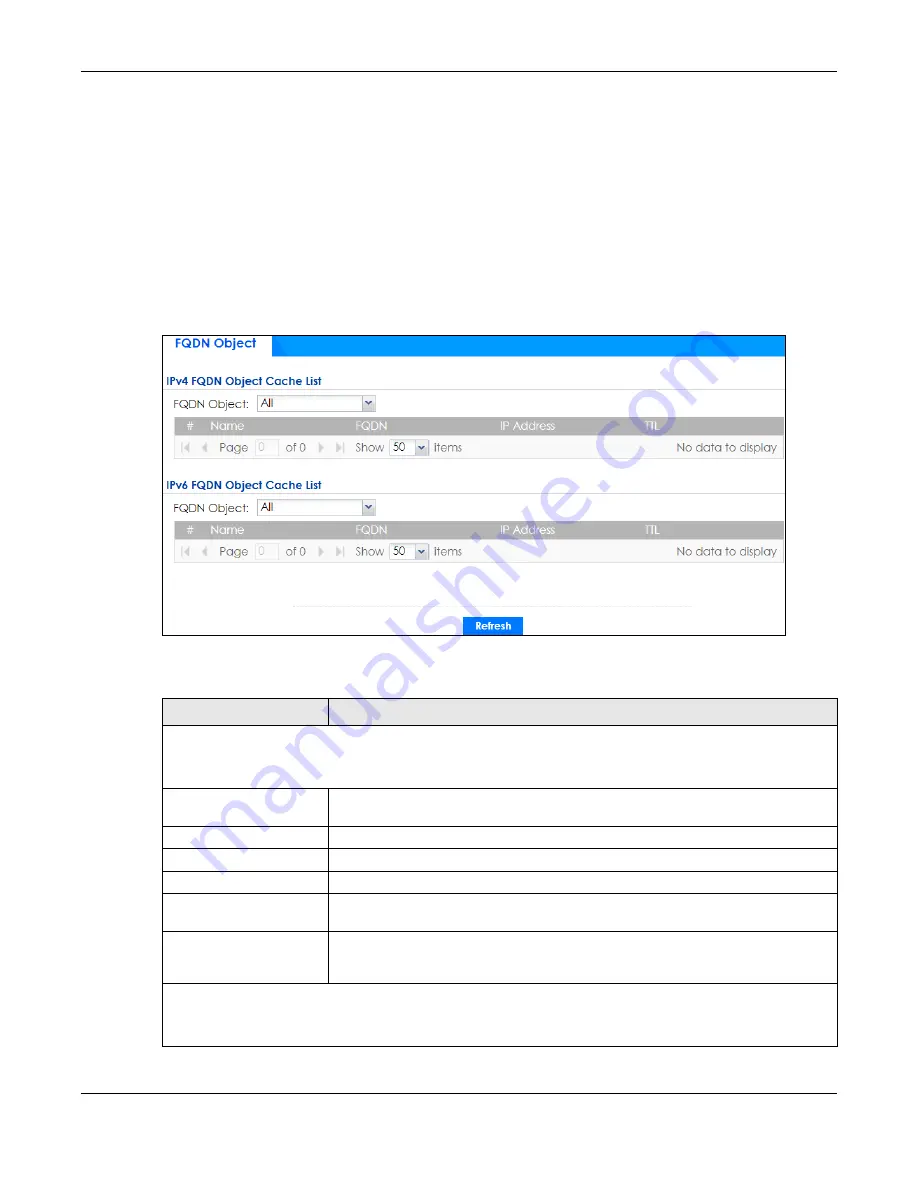
Chapter 6 Monitor
ZyWALL ATP Series User’s Guide
137
FQDN can be used in Security Policy, Policy Route, BWM and Web Authentication profiles as source and
destination criteria. FQDN with a wildcard (for example, *.zyxel.com) can be used in these profiles as
destination criteria only.
Suppose you want to block certain users from going to a website with a dynamically updated IP address
using DDNS. Create an FQDN object for the website in
Object > Address
, and then create a Security
Policy in
Security Policy > Policy Control > Add
. Use the FQDN object to identify the website as a
destination, and configure specific users to block. When a user tries to connect to the forbidden
website, the Zyxel Device first checks the IP address - website mapping in response to the DNS query
and then finds the FQDN object match. The Security Policy that has this FQDN object match can then
block the configured users from accessing the website.
Figure 111
Monitor > System Status > FQDN Object
The following table describes the fields in the previous screen.
Table 41 Monitor > System Status > FQDN Object
LABEL
DESCRIPTION
IPv4 FQDN Object Cache List
You must first configure IPv4 FQDN objects in
Configuration > Object > Address/Geo IP
in the
IPv4 Address
Configuration
field.
FQDN Object
Select a previously created object from the drop-down list box to display related
FQDN object caches used in DNS queries.
#
This is the index number of the FQDN entry.
Name
This field displays the name of the selected FQDN object used in DNS queries.
FQDN
This field displays a host’s fully qualified domain name.
IP Address
This field displays the mapping of the FQDN to an IP address. This is the IP address of a
host.
TTL
This field displays the number of seconds the Zyxel Device holds IP address - FQDN
object mapping in its cache. The mapping is updated when the TTL (Time To Live)
setting expires.
IPv6 FQDN Object Cache List
You must first configure IPv6 FQDN objects in
Configuration > Object > Address/Geo IP
in the
IPv6 Address
Configuration
field.
















































